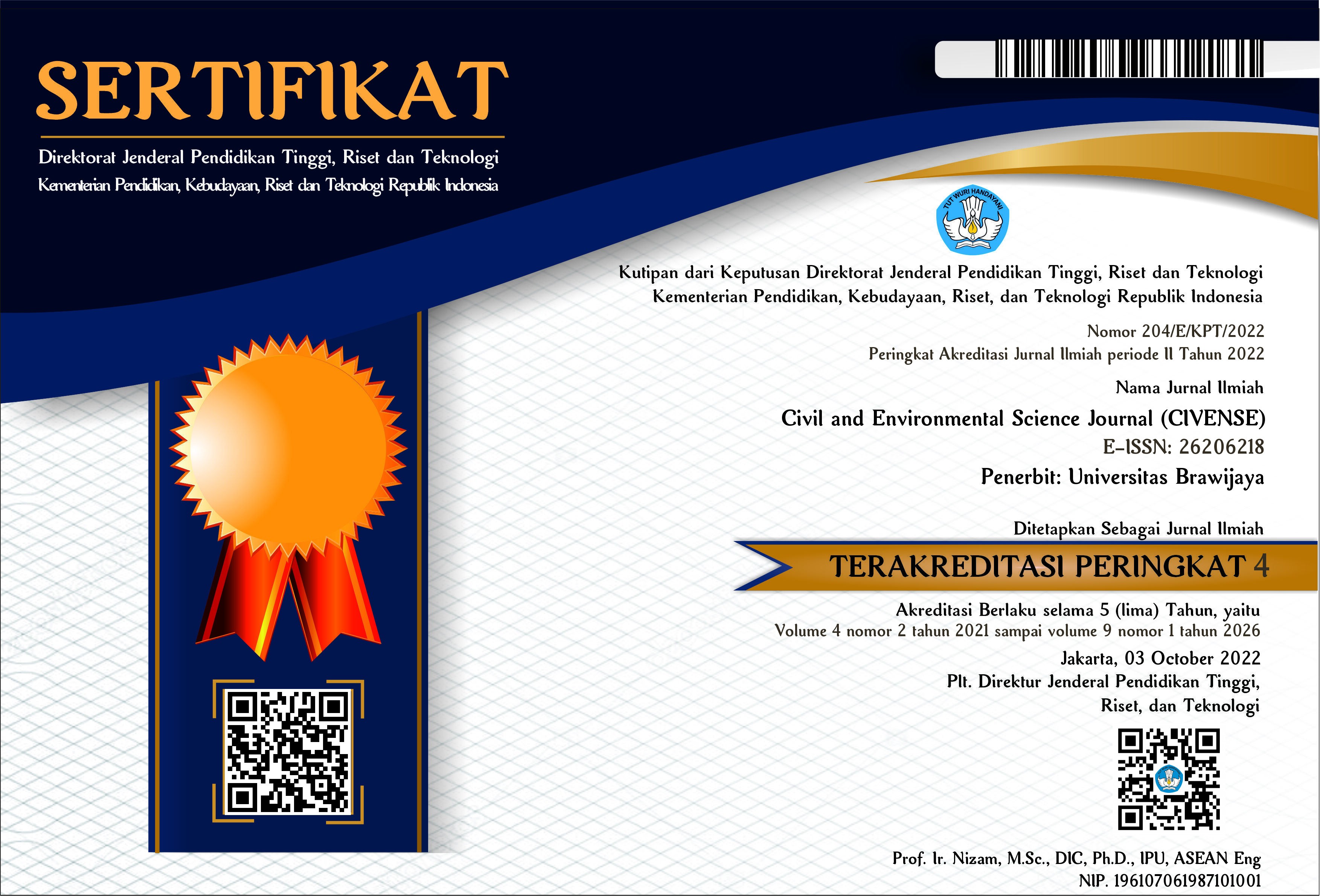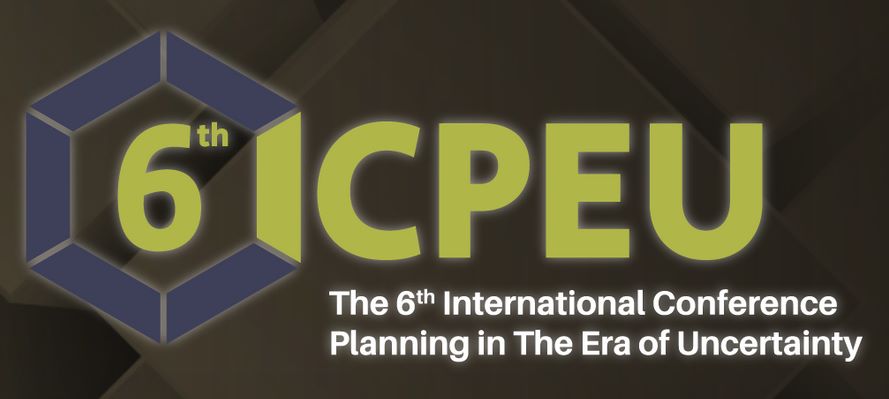Rainwater Harvesting as Alternative Source for Wudlu Water in Indonesia
DOI:
https://doi.org/10.21776/ub.civense.2018.00102.3Keywords:
Rainwater harvesting, alternative source, Muslim, wudlu waterAbstract
Indonesia is the country with the largest Muslim population in the world. And as a country with Muslim big population clean water for wudlu or purification must be available. Rainwater holds potential as an alternative source of wudlu water. Rainwater harvesting (RWH) for religious water supply is still very rare studied. Based on this, the research in this paper aims to calculate the potential supporting capacity of rainwater as an alternative source
of wudlu water. Supporting capacity of rainwater harvesting (SCRWH) in this study was calculated by simulating inflow and outflow behavior at a rainwater harvesting facility in a mosque. Case study takes place at Nurul Iman Mosque in Southern Lampung. The mosque has an area of 168 m and able to accommodate 300 worshipers. Research show that the most effective reservoir size in the RWH facility in the observed mosque is between 15 to 30 m2 with SCRWH for wet years between 65% and 70% and for dry years between 44% and 53%, respectively. The availability of wudlu water in a mosque basically cannot be expected 100% comes from rain water only. In the application of RWH in a mosque the maintenance of the RWH facility must be undertaken well.
References
Abdulla, F. A., and Al-Shareef, A. W. 2009. Roof rainwater harvesting systems for household water supply in Jordan. Desalination, 243:195–207.
Fewkes A. 1999. The use of rainwater for WC flushing: the field testing of a collection system. Building and Environment, 34(6), 765–772.
Handia, L., Tembo, J. M., and Mwiindwa, C. 2003. Potential of rainwater harvesting in urban Zambia. Physics and Chemistry of the Earth, Vol. 28:893–896.
Kahinda JM, Taigbenu AE, and Boroto RJ. 2010. Domestic rainwater harvesting as an adaptation measure to climate change in South Africa. Physics and Chemistry of the Earth, Vol. 32(15-18), pp. 1050–1057.
Khastagir A, and Jayasuriya N. 2010. Optimal sizing of rain water tanks for domestic water conservation. Journal of Hydrology, 381(3–4), pp. 181–188.
Map of the World, 2017. Top Ten Countries with the Largest Renewable Water Supply. Website: https://www.mapsofworld.com/world-top-ten/world-top-ten-fresh-water-supplymap.html.
Poedjiastoeti H, and Syahputra B. 2006. Determination of the maximum peak hour and daily maximums on the domestic water use pattern in Kalasan, Sleman, Yogyakarta. Proceeding of Lecturer Research, Research Institute of Sultan Agung University, Yogyakarta, Indonesia.
Susilo GE, Yamamoto K. and Imai T. 2011. The identification of rainwater harvesting potency in supporting freshwater availability under the effect of El Nino. Proceeding IWA – ASPIRE International Conference, October 2011, Tokyo – Japan.
Susilo GE. 2015. Experience in rainwater harvesting application at household scale in Bandar Lampung, Indonesia. Proceeding of The 1st Young Scientist International Conference of Water Resources Development and Environmental Protection, Malang, Indonesia, 5-7 June 2015
Susilo GE, Efendi R, Desmawati E, and Nalaralagi A. 2017. Promoting rainwater harvesting as an alternative of freshwater source for public sanitation. Journal of Asian Institute of Low Carbon Design (2017), pp. 201–207.
Widyanti, E. 2015. Curah hujan Indonesia, Pengembangan Media Pembelajaran Geografi. Website: http://eka-widiyanti.blogspot.co.id/2015/04/curah-hujan-indonesia.html. 25 January 2018 (20.30 WIB).
Downloads
Published
How to Cite
Issue
Section
License
Copyright (c) 2018 Civil and Environmental Science Journal

This work is licensed under a Creative Commons Attribution-NonCommercial 4.0 International License.
Authors who publish with this journal agree to the following terms:
Authors retain copyright and grant the journal right of first publication with the work simultaneously licensed under a Attribution-NonCommercial 4.0 International License that allows others to share the work with an acknowledgement of the work's authorship and initial publication in this journal.
Authors are able to enter into separate, additional contractual arrangements for the non-exclusive distribution of the journal's published version of the work (e.g., post it to an institutional repository or publish it in a book), with an acknowledgement of its initial publication in this journal.
Authors are permitted and encouraged to post their work online (e.g., in institutional repositories or on their website) prior to and during the submission process, as it can lead to productive exchanges, as well as earlier and greater citation of published work (See the Effect of Open Access).














